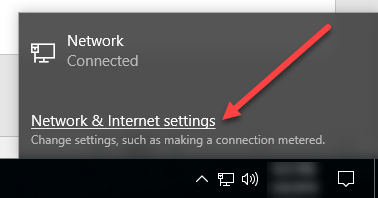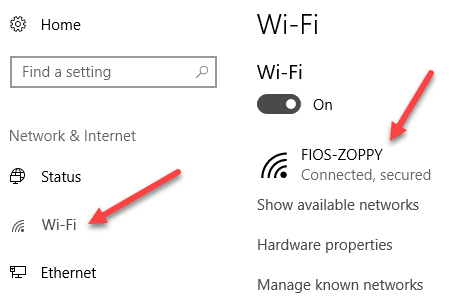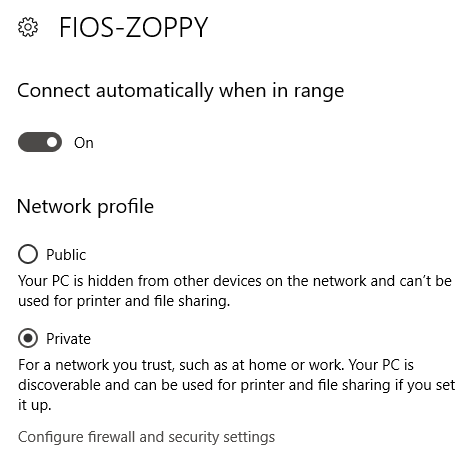How to Ensure Your Computer Network Location is Set to Private
Ensuring that your computer network location is set to private is an important step in protecting your computer from malicious attacks. By setting your network location to private, you can limit the access of other computers on the same network to your computer and its resources. This article will provide step-by-step instructions on how to ensure that your computer network location is set to private.
1. Open the Control Panel. To do this, click on the Start button and select Control Panel from the list of options.
2. Select Network and Internet.
3. Select Network and Sharing Center.
4. Select Change adapter settings.
5. Right-click on the network connection you are using and select Properties.
6. Select the Networking tab.
7. Select the Private radio button.
8. Click OK to save the changes.
By following these steps, you can ensure that your computer network location is set to private. This will help protect your computer from malicious attacks and limit the access of other computers on the same network to your computer and its resources.
The Benefits of Keeping Your Computer Network Location Private
Maintaining the privacy of your computer network location is essential for the security of your data and the safety of your business. Keeping your network location private can help protect your business from malicious attacks, data breaches, and other security threats. Here are some of the benefits of keeping your computer network location private.
1. Increased Security: Keeping your network location private helps to protect your business from malicious attacks. By hiding your network location, you can prevent hackers from accessing your data and systems. This can help to protect your business from data breaches, malware, and other security threats.
2. Improved Privacy: Keeping your network location private can also help to protect your business from unwanted surveillance. By hiding your network location, you can prevent third parties from tracking your activities and accessing your data. This can help to protect your business from data theft and other privacy violations.
3. Reduced Risk: Keeping your network location private can also help to reduce the risk of data loss. By hiding your network location, you can prevent unauthorized access to your data and systems. This can help to reduce the risk of data loss due to malicious attacks or other security threats.
4. Enhanced Performance: Keeping your network location private can also help to improve the performance of your network. By hiding your network location, you can reduce the amount of traffic on your network and improve the speed and reliability of your network. This can help to improve the performance of your business operations.
By keeping your computer network location private, you can protect your business from malicious attacks, data breaches, and other security threats. This can help to improve the security, privacy, and performance of your business operations.
Understanding the Risks of Not Setting Your Computer Network Location to Private
When setting up a computer network, it is important to ensure that the network location is set to private. Failing to do so can lead to a number of security risks, including the potential for malicious actors to gain access to the network and its connected devices.
One of the primary risks of not setting the network location to private is that it can make the network vulnerable to malicious actors. If the network is set to public, it can be accessed by anyone who is within range of the network. This means that malicious actors can potentially gain access to the network and its connected devices, allowing them to view, modify, or delete data. Additionally, they may be able to install malicious software on the network, which can be used to steal sensitive information or launch attacks on other networks.
Another risk of not setting the network location to private is that it can make the network vulnerable to data breaches. If the network is set to public, it can be accessed by anyone who is within range of the network. This means that malicious actors can potentially gain access to the network and its connected devices, allowing them to view, modify, or delete data. Additionally, they may be able to install malicious software on the network, which can be used to steal sensitive information or launch attacks on other networks.
Finally, not setting the network location to private can also make the network vulnerable to cyber attacks. If the network is set to public, it can be accessed by anyone who is within range of the network. This means that malicious actors can potentially gain access to the network and its connected devices, allowing them to launch attacks on other networks or systems. Additionally, they may be able to install malicious software on the network, which can be used to launch attacks on other networks or systems.
In conclusion, it is important to ensure that the network location is set to private when setting up a computer network. Failing to do so can lead to a number of security risks, including the potential for malicious actors to gain access to the network and its connected devices, as well as the potential for data breaches and cyber attacks.
How to Secure Your Computer Network Location Settings
Securing your computer network location settings is an important step in protecting your data and ensuring the safety of your network. Here are some tips to help you secure your network location settings:
1. Change the default settings of your router. Routers come with default settings that are easy to guess, making them vulnerable to attack. Change the default settings of your router to something more secure, such as a combination of letters, numbers, and symbols.
2. Enable encryption. Encryption is a process that scrambles data so that it can only be read by the intended recipient. Enable encryption on your network to protect your data from unauthorized access.
3. Use a firewall. A firewall is a security system that monitors and controls incoming and outgoing network traffic. It can help protect your network from malicious attacks and unauthorized access.
4. Update your software regularly. Software updates often contain security patches that can help protect your network from vulnerabilities. Make sure to keep your software up to date to ensure the best security for your network.
5. Use a virtual private network (VPN). A VPN is a secure connection between two or more computers over the internet. It can help protect your data from being intercepted by malicious actors.
By following these tips, you can help ensure the security of your computer network location settings. Taking the time to secure your network will help protect your data and keep your network safe.
Exploring the Different Types of Computer Network Location Settings
Computer networks are an essential part of modern life, allowing us to connect to the internet, share files, and communicate with each other. As such, it is important to understand the different types of network location settings that can be used to configure a network.
The first type of network location setting is the Home network. This is the most common type of network and is typically used in residential settings. It is designed to provide a secure connection to the internet and other devices on the network. This type of network is usually configured with a router and a modem, and is typically used for basic internet access and file sharing.
The second type of network location setting is the Work network. This type of network is typically used in business settings and is designed to provide a secure connection to the internet and other devices on the network. This type of network is usually configured with a router, a modem, and a firewall. It is typically used for more advanced internet access and file sharing.
The third type of network location setting is the Public network. This type of network is typically used in public places such as airports, hotels, and coffee shops. It is designed to provide a secure connection to the internet and other devices on the network. This type of network is usually configured with a router and a modem, and is typically used for basic internet access and file sharing.
The fourth type of network location setting is the Private network. This type of network is typically used in private settings such as homes and businesses. It is designed to provide a secure connection to the internet and other devices on the network. This type of network is usually configured with a router, a modem, and a firewall. It is typically used for more advanced internet access and file sharing.
By understanding the different types of network location settings, you can ensure that your network is properly configured and secure. This will help to protect your data and ensure that your network is running smoothly.
Tips for Setting Up Your Computer Network Location for Maximum Security
1. Choose a secure location: When setting up your computer network, it is important to choose a secure location. Avoid areas that are easily accessible to the public, such as lobbies or other public areas. Choose a location that is not easily visible from the outside, such as a basement or an interior room.
2. Install physical security measures: Physical security measures, such as locks and alarms, can help protect your network from unauthorized access. Make sure all doors and windows are securely locked and consider installing an alarm system to alert you if someone attempts to gain access to your network.
3. Use secure wireless networks: Wireless networks are convenient, but they can also be vulnerable to attack. Make sure to use a secure wireless network with strong encryption and authentication protocols.
4. Use firewalls: Firewalls are essential for protecting your network from malicious attacks. Make sure to install a firewall on each computer connected to your network and configure it to block any suspicious activity.
5. Monitor your network: Regularly monitor your network for any suspicious activity. Use network monitoring software to detect any unauthorized access attempts or malicious activity.
6. Keep your software up to date: Make sure to keep all of your software up to date with the latest security patches. This will help protect your network from any newly discovered vulnerabilities.
7. Educate your users: Educate your users on the importance of security and the risks associated with using the network. Make sure they understand the importance of using strong passwords and not sharing them with anyone.




